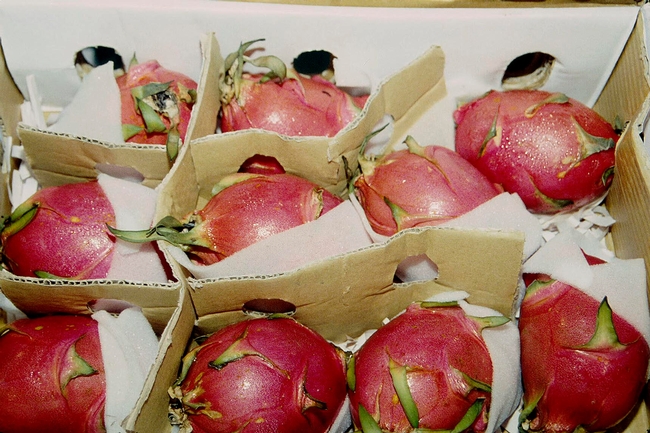
According to the CDFA (2012 statistics), he wrote, the Top-10 commodities produced in California are, in order, included milk, grapes, almonds, nursery plants, cattle and calves, strawberries, lettuce, walnuts, hay, and tomatoes.
Pitahaya must be WAY down the list, but worth a taste, Blake wrote.
Other recent news:
- UC Cooperative Extension hosted an "Insect Blitz" on Sept. 13 at UC Cooperative Extension's Elkus Ranch, which featured the opportunity to consider bugs as a delicious food source, reported the Half Moon Bay Review.
The event also included a "bio blitz," in which participants were encouraged to venture off on the 150-acre site and collect samples of plant and insect species. Elkus Ranch Director Virginia Bolshakova, UC Cooperative Extension advisor and San Mateo-San Francisco County Director, said the event gave the public a chance to learn about the biodiversity of the area.
- The San Jose Mercury News and Contra Costa Times reported on the spread of bagrada bug to the San Francisco Bay Area. The pest was introduced into Southern California six years ago and has been marching northward and eastward ever since.
"This bug is highly nasty," said entomologist Shimat Joseph, UC Cooperative Extension advisor in Monterey County. "It can make a crop unmarketable.
The story also quoted Virginia Bolshakova.
"Everybody is keeping their eyes open as it travels up the coast," she said. "It is likely just a matter of time" until it reaches the rural farms along the edge of the Pacific."
Attached Files: